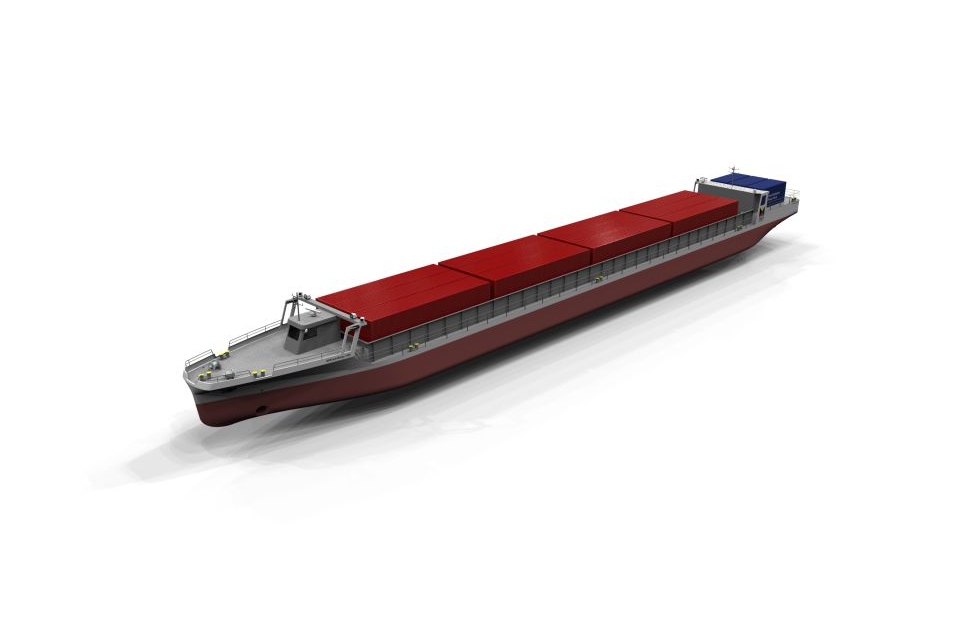Zulu Associates and Flanders Hydraulics will investigate and validate the energy efficiency of the X-Barge in confined and shallow waters. This study is necessary to optimise the X-Barge’s hull shape, especially in the European canals and rivers, and at low water levels.
The study seeks to help enable the transition of inland waterway barges to zero-emission. The less energy the barge needs per tonne/km, the more competitive it is compared to fossil fuel-powered barges.
Zulu Associates is developing a fleet of zero-emission barges and vessels for inland and short sea shipping that use a combination of alternative propulsion forms and autonomous operation to be economically competitive.
Also read: Inland vessel Zulu 4 sails autonomously in Belgium
X-Barge
The X-Barge is an 85-metre CEMT class IV inland vessel, designed for container and dry bulk shipping. It is developed to deal extremely efficiently with its energy resources; by means of modular energy storage and alternative sources of energy such as batteries and/or hydrogen.
In addition, the vessel is designed to navigate autonomously, which is expected to result in the economic margin necessary to compete with fossil-fuelled vessels using alternative energy sources.
Also read: Flagships’ hydrogen powered river barge Zulu 06 on its way to France
Flanders Hydraulics
Flanders Hydraulics (FH) is a division of the department of mobility and public works of the Flemish government. It has been a centre of expertise for research and advice on hydraulic, nautical, sediment-related and hydrological topics for more than ninety years.
The activities are spread over two sites: the main office in Antwerp and the Flanders Maritime Laboratory in Ostend. Through its commercial entity, EV Flanders Hydraulics, FH carries out commercial assignments for the private sector and foreign governments.
The instrumentation of FH comprises the most advanced tools for executing model tests including two towing tanks for ship manoeuvring in shallow and confined water. FH also possesses numerical models, such as navigation simulators and models predicting current velocities impacting the behaviour of ships. Testing facilities and numerical models will be used in complement to each other to reinforce their strength and generate synergy.
Picture by Zulu Associates.








